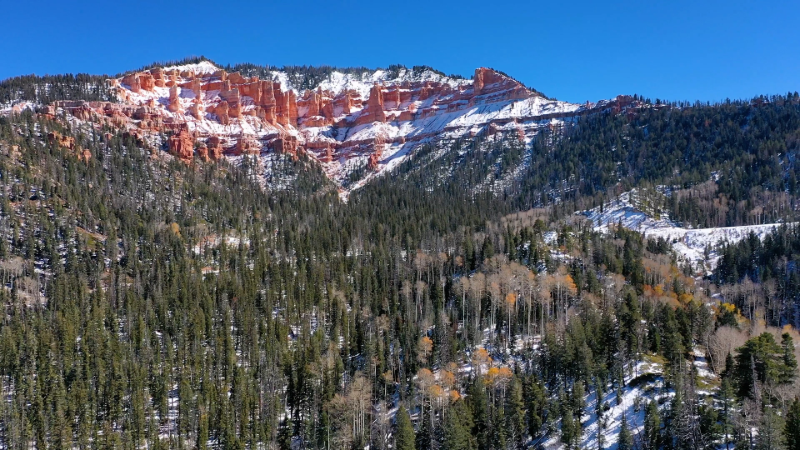Labor Day is here. Where are the hurricanes?
A lull in tropical activity may keep the Atlantic quiet on Labor Day, but AccuWeather meteorologists warn conditions could turn more favorable for storms by mid-September.
Bernie Rayno explains that a combination of dry air, wind shear and cooler waters in the Atlantic basin is reducing the likelihood of tropical storm development, making a storm-free Labor Day weekend a real possibility.
Historically, one or more tropical storms or hurricanes develop in the Atlantic Basin around Labor Day weekend. This year may bring a quieter end to summer in the tropical Atlantic, but AccuWeather meteorologists are monitoring a few low-chance areas, including one near the southeastern U.S. coast.
Labor Day 2024 was also quiet in terms of tropical activity, but the hurricane season still produced 18 tropical storms, 11 hurricanes and five major hurricanes. Hurricane Milton was the most intense, reaching Category 5 with peak sustained winds of 180 mph.

This wide view of the tropical Atlantic shows a cluster of thunderstorms from Africa (lower right) as of Monday, Sept. 1 2025, which has a medium risk of tropical development. (AccuWeather Enhanced RealVue™ Satellite)
Despite the current lull, the Atlantic remains on pace for the typical number of tropical storms heading into September.
How long might it stay quiet?
Several factors are contributing to the current pause in tropical activity following Category 5 (160 mph) Hurricane Erin and Tropical Storm Fernand (60 mph).
“Because Erin was a large and powerful hurricane, it churned up the western Atlantic and pulled chilly water to the surface,” AccuWeather Lead Hurricane Expert Alex DaSilva said. “That swath of cool water continues to linger along Erin’s path.”

Tropical depressions, storms and hurricanes typically require sea-surface temperatures of at least 80 degrees Fahrenheit to form and intensify, so this zone of cool water may temporarily help suppress tropical development.
“We have also noted a large swath of dry air extending westward across much of the main development region,” DaSilva said. “Tropical waves of low pressure that typically drive the season are struggling to strengthen in that dry, dusty environment.”

A new tropical wave forecast to emerge off Africa early this week carries a medium chance of development in the main development region. Should this evolve into a tropical depression or storm, it is likely to curve northward well to the east of Bermuda and perhaps east of the Windward and Leeward islands in the eastern Caribbean.
“However, it could help displace some of that dry air, paving the way for subsequent waves to encounter a more moist environment that would be more conducive to tropical development," DaSilva said.

Another factor is thunderstorm activity, known as the Madden-Julian Oscillation (MJO), which travels eastward around the globe near the equator. As it shifts to the Atlantic Basin, tropical activity is likely to increase during the second week of September.
Area near southeast US coast still a concern for beachgoers
A zone of showers and thunderstorms is expected to persist from the northeastern Gulf to off the shore of the Carolinas through the holiday weekend into early this week.

“We expect periods of rain across parts of Florida and the Southeast U.S. during the holiday weekend,” DaSilva said. Locally gusty thunderstorms are also likely with the potential for a few waterspouts.
The interaction between that system and high pressure moving from Michigan into New York and Pennsylvania will generate persistent northeast winds.

These winds will build surf and raise the risk of rip currents. The setup may also lead to renewed beach erosion and minor coastal flooding in areas previously affected by Erin.
Atlantic to awaken, Gulf has potential to roar
AccuWeather meteorologists anticipate periods of increased activity in the Atlantic Basin during the rest of the hurricane season.

In terms of intensity and potential impact on the U.S., the Gulf remains highly vulnerable, with very warm waters that could fuel rapid strengthening of any tropical system that develops or moves into the region.
Multiple areas of interest in Pacific basin
Meanwhile, tropical activity is increasing in the eastern and central Pacific, where Tropical Storm Kiko has formed and another storm may form in the coming days. Tropical Storm Kiko was named on Sunday and is not expected to have any direct impacts to land over the next few days.

Want next-level safety, ad-free? Unlock advanced, hyperlocal severe weather alerts when you subscribe to Premium+ on the AccuWeather app. AccuWeather Alerts™ are prompted by our expert meteorologists who monitor and analyze dangerous weather risks 24/7 to keep you and your family safer.
Report a Typo














